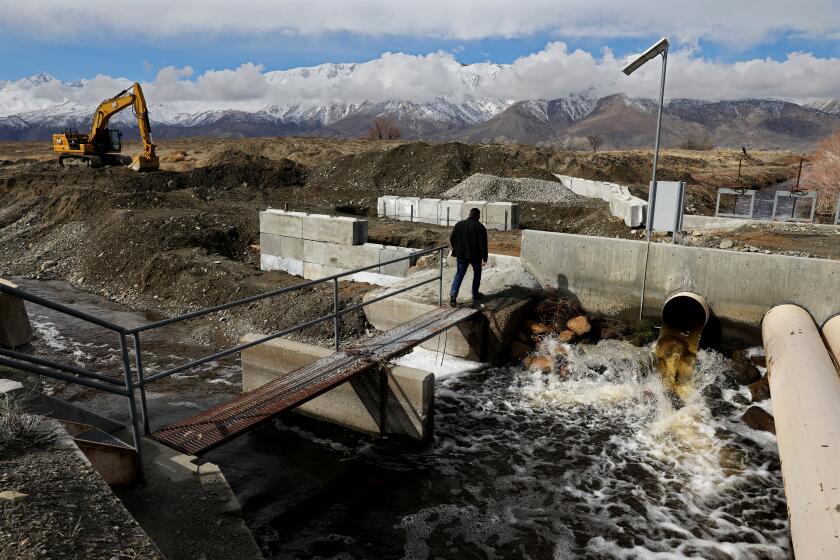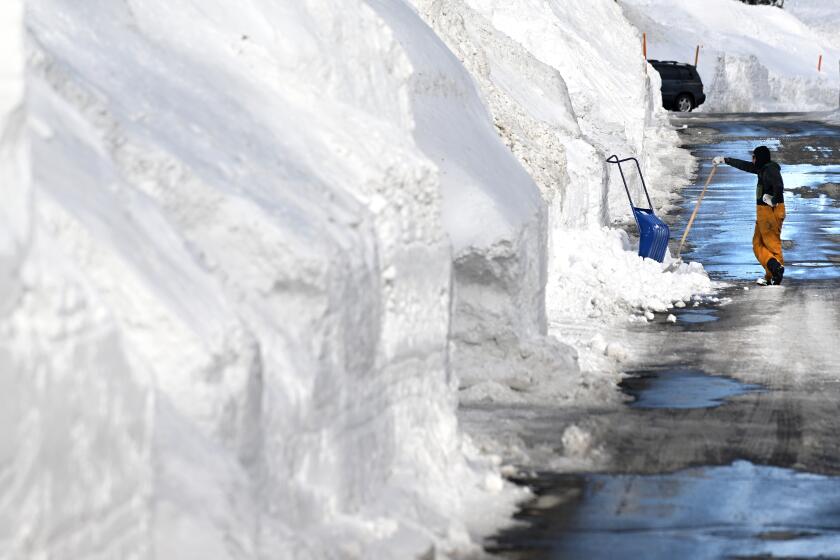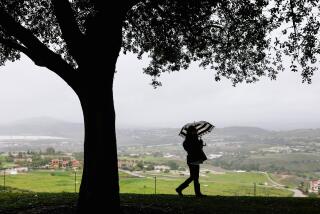Climate whiplash — wildfires, flash floods, landslides — leaves a corner of L.A. County reeling
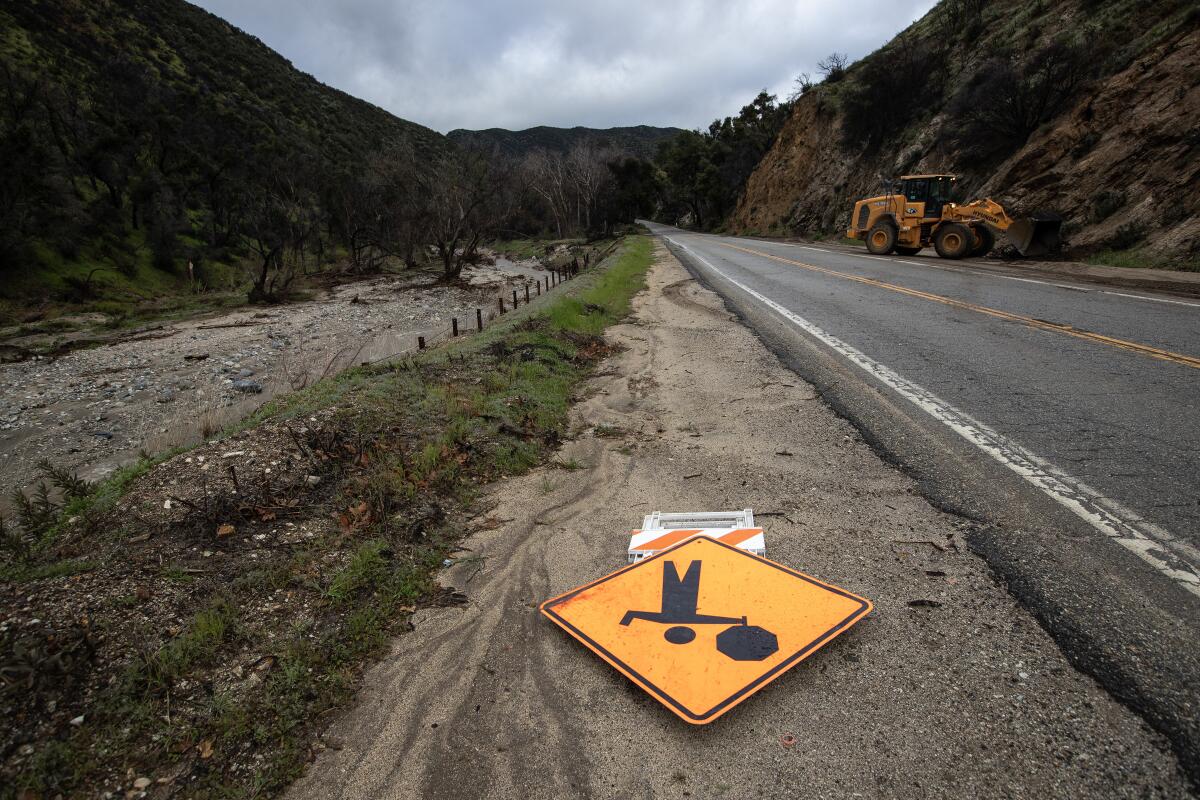
Oak forests, rugged canyons and mountain creeks make the tiny communities of Lake Hughes and Elizabeth Lake in northwestern Los Angeles County seem as far as one can get from urban commotion and pollution.
Known jointly as the Lakes, it is an unincorporated region where people get by on self-reliance and mutual aid. A large welcome sign planted directly on the San Andreas Fault proudly states: “The Lakes, Where Nature is Your Neighbor.”
On Friday, as county crews used heavy machinery to remove rocks, debris and toppled trees that blocked mountain roads after heavy rain triggered flooding, residents found compassionate neighbors to help mop up mud and salvage belongings in flood-ravaged yards.
But as the community emerged from yet another punishing storm last week, old-timers acknowledged that this is not an ordinary year for the roughly 3,000 mostly middle-class residents who live in homes ranging from cabins to rambling ranches.
The Los Angeles Department of Water and Power is struggling to maintain the city’s Eastern Sierra aqueduct amid continued flooding from snowmelt.
They also said their lifestyle is getting edgier because of the cascading consequences of climate whiplash — wildfires, flash floods and landslides — that have visibly altered the contours of the surrounding Sierra Pelona Mountains at the headwaters of the Santa Clarita River.
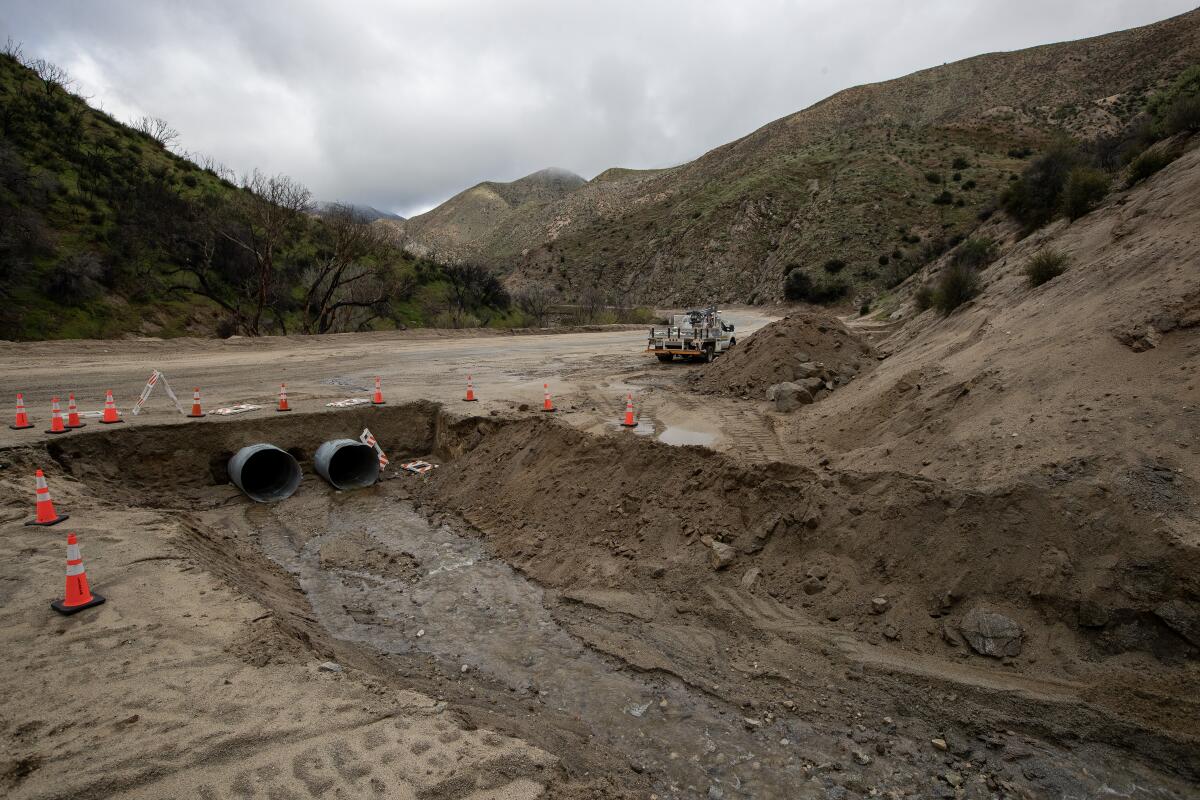
“We’ve never had a rainy season like this one,” said Jeff Bell, 67, a local resident of 34 years. “The landscape is changing before our eyes, perhaps forever. There aren’t as many pine trees and oaks around here as there used to be. Canyons are full of tree trunks, boulders and deep new layers of sand.”
Experts say the magnitude of these events has been exacerbated by severe drought and several massive wildfires over the last decade that stripped slopes of vegetation, leaving them prone to landslides.
In September, 21 vehicles became trapped in a mudslide in the Lake Hughes area, about 28 miles northwest of Castaic. Los Angeles County firefighters and California Highway Patrol officers rescued 51 people, some by helicopter.
Ten county roads damaged by recent storms, including a 10-mile stretch of Lake Hughes Road, were still subject to closures on Friday, with most of them open only to emergency vehicles and local residents.
Meanwhile, county crews have been working 12-hour shifts to clear roads that were closed after topsoil slid down fire-stripped slopes, pulling with it trees and rocks.
John Huston, the road maintenance supervisor in the area, shook his head in amazement as he strode across a pair of corrugated culvert drain pipes 48 inches in diameter that were overwhelmed by roiling water 15 feet deep.
“We’ve made a lot of progress, despite new storms rolling in almost every week,” Houston said, as earthmovers roared nearby. “It’ll be about another six months before we complete the job in this area.”
As record snows saddle the eastern Sierra Nevada, snowmelt threatens to inundate Los Angeles Department of Water and Power infrastructure.
But the work will be restricted to county roads, culverts and easements. That’s because the community has rejected proposals to form a flood control district, which they say would increase local taxes and add a layer of government intervention to their rural lifestyle.
Only 35 properties out of an estimated 200 in the area are covered by the National Flood Insurance Program, county officials said.
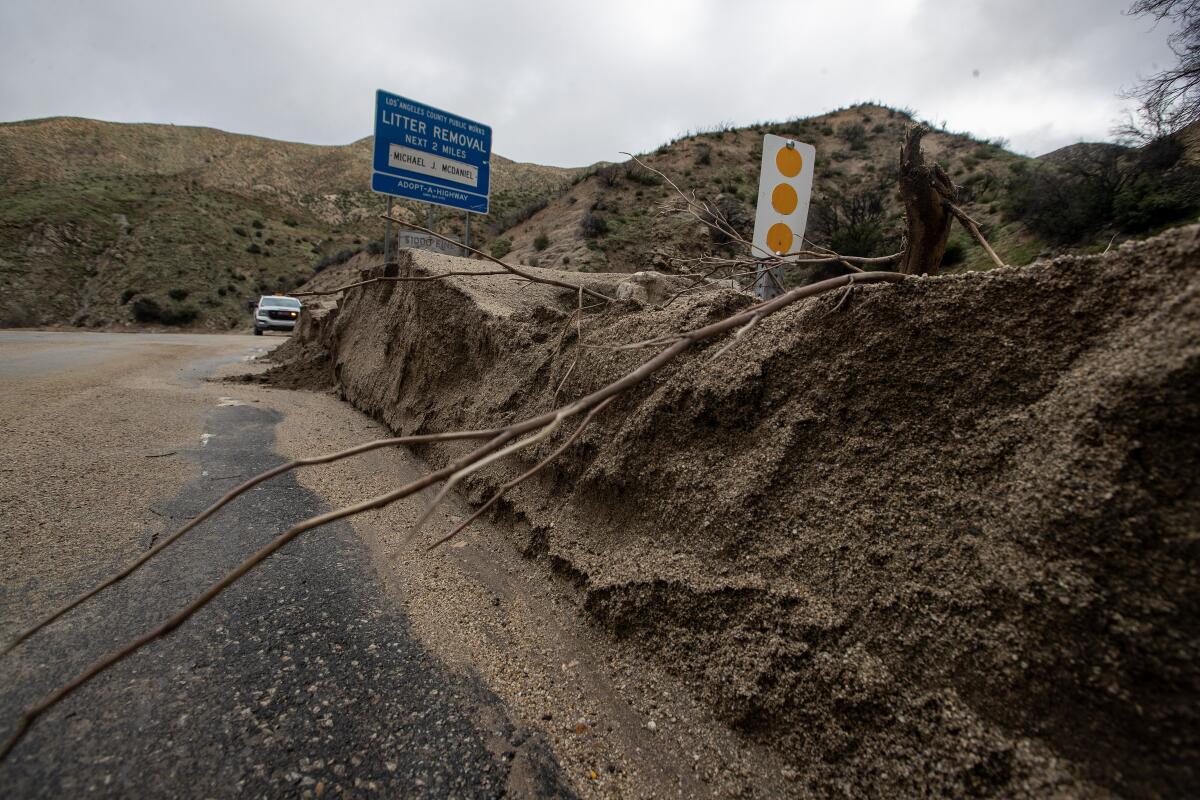
“These are very resilient, very self-reliant people,” said Mark Pestrella, director of Los Angeles County Public Works. “About every 10 years or so, we ask them if they want to invest in a flood control district.”
“The response,” he added, “has always been a resounding, ‘No.’”
That may change, however. Los Angeles County Supervisor Kathryn Barger has directed the county to explore options including the use of so-called climate resilience districts recently approved by the state to fund projects including flood control infrastructure.
“It could be a game changer for these communities,” she said.
Resident Carl Schuster, 68, wouldn’t argue with any of that. “No doubt about it,” he said. “Living up here is treacherous.”
“But attitudes around here start to change when the weather warms up,” he added with a laugh. “In fact, I’m done kvetching about winter. I’m into kvetching about summer now.”
More to Read
Start your day right
Sign up for Essential California for news, features and recommendations from the L.A. Times and beyond in your inbox six days a week.
You may occasionally receive promotional content from the Los Angeles Times.
